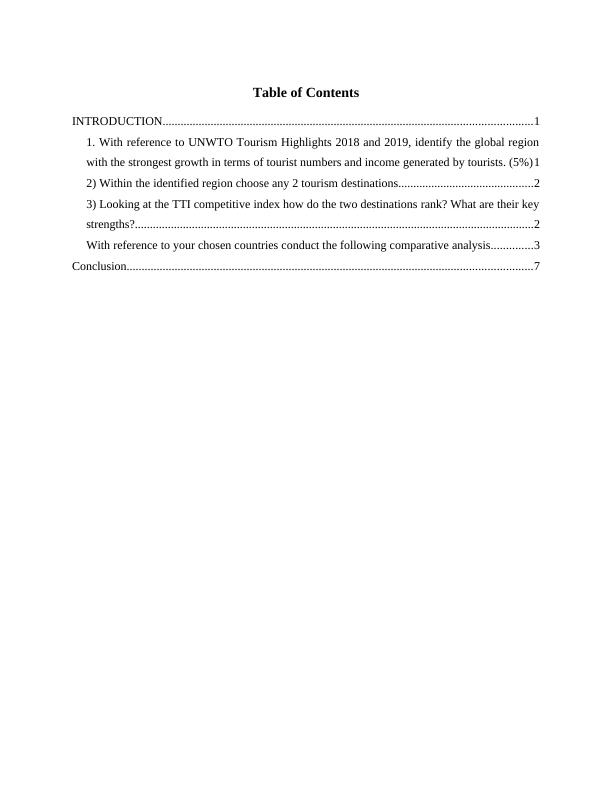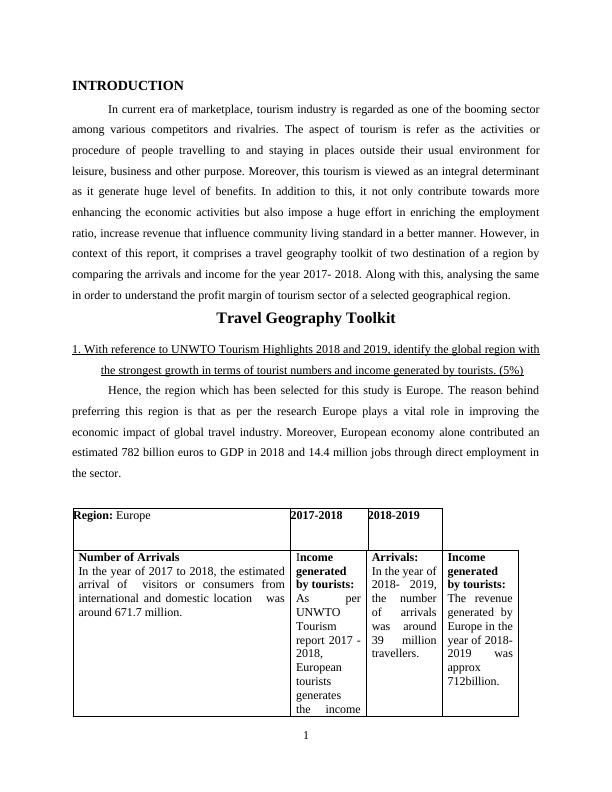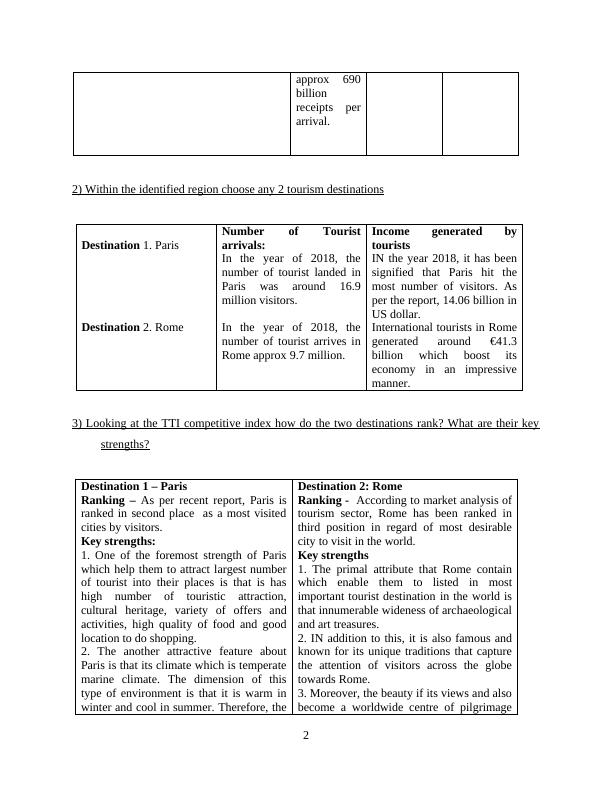Travel Geography Toolkit: Comparative Analysis of Paris and Rome
12 Pages2877 Words34 Views
Added on 2023-01-17
About This Document
This report provides a comparative analysis of Paris and Rome as tourist destinations, including their key strengths, geographical attractiveness, and tourism products. It also examines the accessibility and connectivity of the destinations, key markets, and the political stability of the countries.
Travel Geography Toolkit: Comparative Analysis of Paris and Rome
Added on 2023-01-17
ShareRelated Documents
End of preview
Want to access all the pages? Upload your documents or become a member.
Comparative Analysis of Tourism in France and Germany
|7
|2319
|63
Comparative Analysis of Tourism in France and Spain
|8
|2236
|84
Travel Geography Toolkit
|6
|2604
|26
CW1 Toolkit for Destination Planning & Development in Rome, Italy
|11
|3226
|55
Comparative Analysis of Tourism Destinations in France and Spain
|8
|1997
|87
CW1 Toolkit for Destination Planning & Development
|12
|3384
|44




